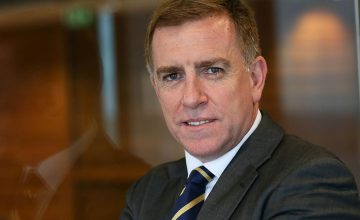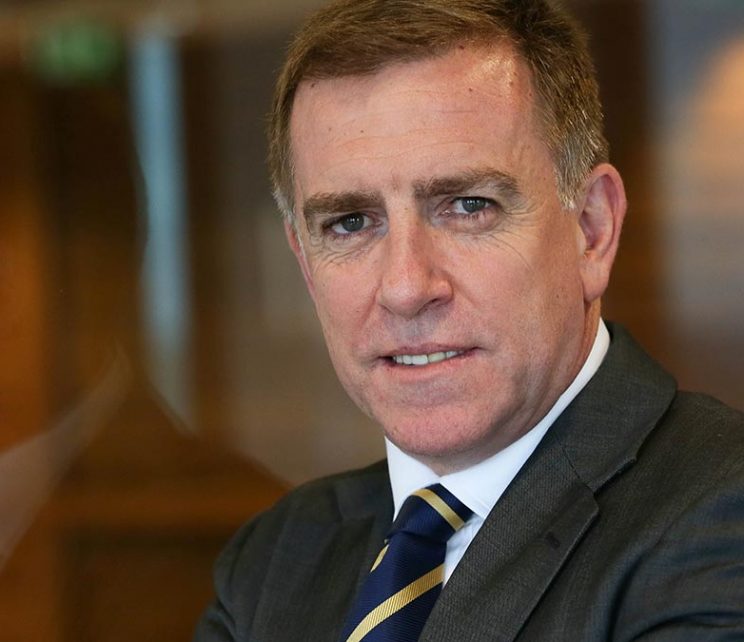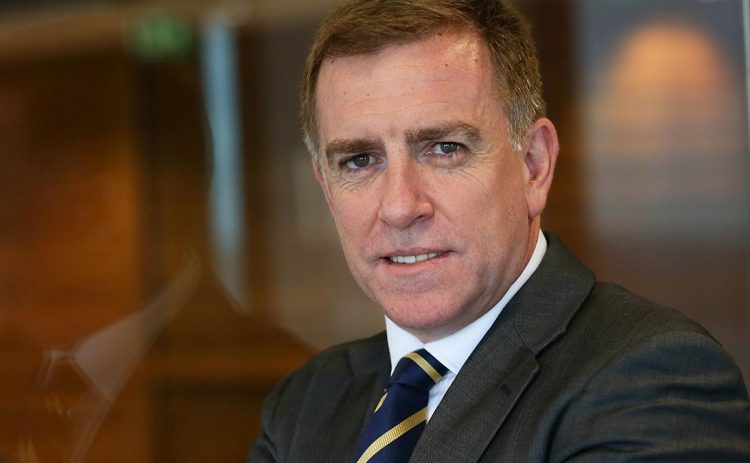
Mainstream Online Web Portal
LoginInvestors can view their accounts online via a secure web portal. After registering, you can access your account balances, periodical statements, tax statements, transaction histories and distribution statements / details.
Advisers will also have access to view their clients’ accounts online via the secure web portal.
The Point
Quick, actionable insights for investors
Income and Fixed Interest

Look to government bonds instead of term deposits
Ultra-loose monetary policy is creating exceptions to risk and reward – and bringing opportunities for better returns, says Pendal’s Oliver Ge.
Investors who choose the safety of a government bond held to maturity are now offered better returns than a nominally higher-risk bank term deposit.
“The big banks are offering about 0.25 per cent on a one-year term deposit — $25 on a $10,000 investment.
“A one-year Australian government bond is paying 1 per cent — four times as much money.” State government bonds offer more — as high as 1.6 per cent for West Australian semi-government bonds.
The anomaly exists because the RBA is providing very cheap funding to the banks, meaning they can keep deposit rates artificially low without affecting the financing of their lending businesses.
By contrast, government bonds are issued into a competitive global market and rates are set by investor demand.
It’s likely to stay this way as long as banks have access to cheap funding.
“This is a genuine opportunity to get a lot more juice with the same or better safety – assuming you hold to maturity.”

China isn’t likely to invade Taiwan any time soon. Here’s why
Quick view
China isn’t likely to invade Taiwan any time soon. Here’s why
It’s understandable that investors pondering their exposure to Russia’s invasion of Ukraine might also think harder about the China-Taiwan stand-off.
But a Chinese invasion of Taiwan is a very low probability event in the short or medium term, says Pendal’s Oliver Ge.
“Near term the Chinese Communist Party has other priorities at stake. President Xi has promised to rectify growing domestic discontent over diminished living standards. Housing affordability and employment opportunities are key focal points for the CCP leadership.
“In the medium term, Taiwan’s support from the US remains crucial. Remember that Taiwan (but unfortunately not Ukraine) is of great strategic importance to Washington. China has no appetite for a direct confrontation with the US.
“These points don’t negate the possibility of a conflict in the longer term. A unified China is arguably the biggest political objective of the CCP.
“But for now the carrot of economic cooperation remains the preferred policy over brute force.”

Tim Hext: Why 2026 could favour bond investors
Play podcastTim Hext: Why 2026 could favour bond investors
As tariff news has died down, markets have come flying back in the last few months.
“But we do have a world now where the US tariff rate on average is around 18%,” observes Pendal’s head of government bond strategies, Tim Hext.
“That is not a world we have seen for almost 100 years, not since World War II.”
But it’s an environment made for active investors, says Tim in this new short podcast.
It can take years to understand the full impact of trade tariffs, yet markets tend to be very short-term focused, he says.
“That does present a lot of opportunities for an active manager,” says Tim.
“It gives does give us plenty of good opportunities to add value in active portfolios, and that’s what we’re doing at the moment.”

Elise McKay: What’s driving rotation in equities
Play podcastElise McKay: What’s driving rotation in equities

Fast podcast: Tariff uncertainty means opportunity for active investors
Play podcastFast podcast: Tariff uncertainty means opportunity for active investors
As tariff news has died down, markets have come flying back in the last few months.
“But we do have a world now where the US tariff rate on average is around 18%,” observes Pendal’s head of government bond strategies, Tim Hext.
“That is not a world we have seen for almost 100 years, not since World War II.”
But it’s an environment made for active investors, says Tim in this new short podcast.
It can take years to understand the full impact of trade tariffs, yet markets tend to be very short-term focused, he says.
“That does present a lot of opportunities for an active manager,” says Tim.
“It gives does give us plenty of good opportunities to add value in active portfolios, and that’s what we’re doing at the moment.”
Tim Hext: Australia’s in a surprisingly good position to weather the global storm
Investors could not be blamed for feeling a bit queasy at Donald Trump’s whipsaw approach to tariffs.
“The tariff threat does add to this argument that inflation isn’t about to come down anytime soon,” says Pendal’s head of bonds strategies Tim Hext in our latest Fast Podcast.
“The market is right to be a little bit concerned. Obviously free trade – or some version of free trade generally benefits both parties.
“The law of comparative advantage says you end up focusing on what you are a cheap producer of. If you start to throw sand into the gears of free trade that’s not a good thing.
“Ultimately, I think it is bad for growth and will mean slightly higher inflation, but not enough to suddenly cause rate hikes in the near future.”
“It creates a lot of short-term noise, but fortunately investors with a medium-to-long-term time-frame can leave it to people like me to worry about that.”
Tim says investors should hold course for now.

Pendal profile: Meet our head of government bond strategies, Tim Hext
Quick view
Pendal profile: Meet our head of government bond strategies, Tim Hext
Investors could not be blamed for feeling a bit queasy at Donald Trump’s whipsaw approach to tariffs.
“The tariff threat does add to this argument that inflation isn’t about to come down anytime soon,” says Pendal’s head of bonds strategies Tim Hext in our latest Fast Podcast.
“The market is right to be a little bit concerned. Obviously free trade – or some version of free trade generally benefits both parties.
“The law of comparative advantage says you end up focusing on what you are a cheap producer of. If you start to throw sand into the gears of free trade that’s not a good thing.
“Ultimately, I think it is bad for growth and will mean slightly higher inflation, but not enough to suddenly cause rate hikes in the near future.”
“It creates a lot of short-term noise, but fortunately investors with a medium-to-long-term time-frame can leave it to people like me to worry about that.”
Tim says investors should hold course for now.

Pendal profile: Meet our head of credit and sustainable strategies George Bishay
Play podcastPendal profile: Meet our head of credit and sustainable strategies George Bishay
Services – particularly wages and rental inflation – have held up prices recently. But Pendal’s forward indicators show the drivers of these two factors weakening.
That means inflation in developed markets should continue to fall and central banks globally can start cutting rates, says Pendal’s head of credit George Bishay.
It’s a bullish scenario for bonds as well as credit and equity markets, he says.
But one of the risks for that scenario is a Donald Trump victory in November.
“If Trump wins the election, will he have the ability to change policy? Will he have a majority in both houses of Congress?
“If he does, that’s problematic for bonds because ultimately that’s likely to be inflationary,” says George.
The impact of a Trump presidency is more skewed towards longer-term bonds because his policies would likely have a medium-term impact on inflation, George says.
“The short end should continue to perform because central banks will be easing rates as current inflation comes down.”

Pendal profile: Meet our head of income strategies Amy Xie Patrick
Play podcastPendal profile: Meet our head of income strategies Amy Xie Patrick

Amy Xie Patrick: Turbulent conditions require a decisive, active approach to fixed income
Play podcastAmy Xie Patrick: Turbulent conditions require a decisive, active approach to fixed income
Fixed-income investors looking for lower yields – and therefore higher prices on their bond investments – may be disappointed with the recent cycle.
“When I’ve been speaking to clients over the past few weeks, many have been worried that the cutting cycle is not translating to lower bond yields in the same way we’ve seen previously,” notes Pendal’s Amy Xie Patrick in her latest fast podcast.
But investors need not be concerned, since conditions still favour a rate-cutting environment, says Amy, who leads Pendal’s fixed-income strategies.
Underlying inflation is under control – supported by a looser US labour market which has not yet been impacted by President Trump’s mooted immigration crack-down. n Australia a tighter labour market has not led to significant wage increases.
“The market’s priced in two more US cuts this year, maybe another two in Australia.
“The RBA has enough room to get back to neutral fairly quickly… And the Federal Reserve probably has the ability to move a little bit more than the market’s priced in.
“It’s still a choppy year ahead – but this is where a proven active process for duration and rates really does count for fixed-income portfolios.”

Tim Hext: Hold course in the face of Trump’s whipsaw tariffs
Play podcastTim Hext: Hold course in the face of Trump’s whipsaw tariffs
Investors could not be blamed for feeling a bit queasy at Donald Trump’s whipsaw approach to tariffs.
“The tariff threat does add to this argument that inflation isn’t about to come down anytime soon,” says Pendal’s head of bonds strategies Tim Hext in our latest Fast Podcast.
“The market is right to be a little bit concerned. Obviously free trade – or some version of free trade generally benefits both parties.
“The law of comparative advantage says you end up focusing on what you are a cheap producer of. If you start to throw sand into the gears of free trade that’s not a good thing.
“Ultimately, I think it is bad for growth and will mean slightly higher inflation, but not enough to suddenly cause rate hikes in the near future.”
“It creates a lot of short-term noise, but fortunately investors with a medium-to-long-term time-frame can leave it to people like me to worry about that.”
Tim says investors should hold course for now.
Loading posts...
Loading posts...














